Forklifts, rough terrain forklifts , reach trucks or pallet trucks – these terms are familiar to many of us and are often associated with material transport.
But did you know that there are many other types of forklifts? And more importantly: Do you know their specific applications?
This article will discuss the different models and not only present the most common types, but also take a look at lesser-known examples. Ever heard of telescopic handlers , side loaders, or heavy-duty forklifts?
Choosing the right type of forklift can significantly impact the efficiency and productivity of your work environment.
- Which type is best suited for transporting pallets?
- Which one is best suited for narrow aisles?
- And is there perhaps one that was specifically designed for heavy loads?
An overview of the most common types of forklifts
Let's start with the types of forklifts that are considered standard. They are used in almost all work environments and shape key material flow processes.
forklift
Forklifts are undoubtedly the most widely used material handling equipment in warehouses, factories, and logistics centers worldwide. They are characterized by their forks, which can be inserted under pallets to lift and transport them. A distinctive feature of many forklifts , especially counterbalanced forklifts, is the counterweight at the rear, which provides stability when lifting objects (counterbalance forklifts). Forklifts come in various sizes and configurations, including counterbalanced and rough terrain forklifts.

Key data (reference values)
- Load capacity: approx. 1,000–7,500 kg
- Lifting height: up to ~7.5 m
- Drive systems: Electric, diesel, gas
Reach Trucks
Reach trucks are specifically designed for high-bay warehouses. They navigate narrow aisles safely and achieve high lifting heights, making them ideal for storing and retrieving goods from high shelves. Their forks allow for precise pallet placement, and models with a rotating driver's seat offer the operator improved forward and side visibility – enhancing both safety and efficiency.
Key data (reference values)
- Aisle width: ~2.4–2.8 m
- Lifting height: up to ~13–14 m
- Load capacity: up to ~2,500 kg
reach truck
Reach trucks are also designed for use in high-bay racking and are particularly suitable for use with narrow-aisle racking. With their hydraulically movable mast, they can lift pallets to great heights and move loads flexibly forwards or backwards. This allows them to be positioned closer to the racking, significantly improving maneuverability in narrow aisles. Models with a rotating driver's seat also offer a better view of the forks and load – a clear advantage for precise storage and retrieval.
Key data (reference values)
- Tropic of gravity: ~1.7–2.2 m
- Lifting height: up to ~13 m
- Application: High-bay racking, narrow aisles on smooth floors
Electric forklift
Electric forklifts are better for the environment than diesel forklifts and other models powered by combustion engines. They are ideal for environments where air quality is important, thanks to their powerful batteries. Electric forklifts are environmentally friendly. They are superior to diesel forklifts because they operate cleanly and efficiently, producing no exhaust fumes. Electric forklifts are quiet, making them perfect for use in enclosed spaces or near workers. They resemble tire stackers and are stable and safe. Electric forklifts are available in various sizes and lifting capacities, offering versatile applications depending on the weight capacity.
Key data (reference values)
- Operation: emission-free, quiet, low maintenance
- Batteries: Lead-acid, lithium-ion (fast charging, 24/7 operation)
Multi-directional forklift
Multi-directional forklifts are true specialists when it comes to transporting long or bulky goods. They can move not only forwards and backwards, but also sideways or diagonally – and that's precisely what makes them so flexible.
They are therefore indispensable, especially in the wood, metal, and construction industries. Whenever long loads need to be moved with millimeter precision in narrow aisles, the multidirectional forklift demonstrates its strength – as a perfect complement to conventional forklifts.
Key data (reference values)
- Driving modes: forward, backward, sideways, diagonal
- Use: Long goods in narrow aisles
Less well-known, but highly specialized forklift types
Besides the standard models, there are also specialized forklift types designed for very specific tasks and operating environments. These often lesser-known machines significantly increase efficiency and productivity in many cases. Below, we introduce some of these specialists.
telescopic handler
Telescopic handlers are true all-rounders for working at heights. With their extendable boom, they lift and move heavy loads safely and precisely – ideal for construction projects, agriculture, or logistics. Whether building materials, crops, or event equipment: the operator can position the load with pinpoint accuracy, saving time, effort, and costs.

A rotating telescopic handler with winch: can also be combined with other attachments .
Key data (reference values)
- Lifting height: up to ~17.5 m
- Load capacity: up to ~4,000 kg
- Terrain: large pneumatic tires, high ground clearance
Side loader
Side loaders – also known as cross-loaders – are true space savers in tight warehouses, high-bay racking, and logistics centers . While conventional forklifts often reach their limits, side loaders pick up loads from the side and can also transport them laterally. This saves space, facilitates maneuvering in narrow aisles, and reduces the risk of damage.
Side loaders are particularly advantageous when transporting long goods such as wooden beams, pipes, or steel girders . Whether in the wood, metal, or paper industry, their lateral lifting capability allows for the precise movement and placement of bulky goods – without the need to turn the vehicle itself. This makes side loaders efficient tools that save time, accelerate work processes, and enhance safety.
Key data (reference values)
- Load capacity: ~2,000–50,000 kg
- Strengths: Long goods in narrow aisles, lateral load handling
heavy-duty forklift
Heavy-duty forklifts play a crucial role in large industrial facilities, particularly logistics centers, where a wide variety of forklift types and models are used. These impressive machines, often referred to as giants of material handling, are specialized in safely and efficiently lifting and transporting loads weighing many tons.
In many industries, such as steel mills, port facilities, construction sites, and production plants, companies face the challenge of moving exceptionally heavy objects like heavy machinery, large containers, or massive steel beams. Conventional forklifts, regardless of their design, quickly reach their limits in these situations.
Heavy-duty forklifts are designed to meet these demanding requirements. With their robust construction, powerful engines, and specialized load-handling attachments, they can move loads of up to several hundred tons. These giants can not only lift and transport heavy goods safely, but also position them precisely, which is particularly important during loading and unloading.
In steel mills, port facilities, and on construction sites, they are indispensable helpers. Despite their impressive size and power, heavy-duty forklifts are surprisingly precise and easy to control, making them all-rounders in challenging environments. Their efficiency contributes significantly to accelerating workflows and reducing both time and labor costs.
When it comes to moving exceptionally heavy loads in large industrial plants or logistics centers, heavy-duty forklifts are the giants of conveyor technology and an indispensable tool.
Key data (reference values)
- Load capacity: >20 t to well over
- Applications: Steel, ports, heavy industry
Compact and mini forklifts
Compact and mini forklifts , as their name suggests, are true all-rounders when it comes to moving loads in confined spaces within a company. Despite their compact design, often consisting of only three or four wheels, they are powerful and versatile.
Compact forklifts are ideal for warehouses and high-bay racking systems where space is limited and operating areas are often restricted. Thanks to their maneuverability and precision, they can effortlessly navigate narrow aisles and safely lift heavy loads. With their ability to precisely position objects during picking and setting down, compact forklifts are an optimal choice when it comes to making the best possible use of available space without compromising performance.
Even smaller and often electrically powered are mini forklifts, the ideal helpers for tasks requiring the highest precision. They are perfectly suited for handling light objects in confined spaces, such as small workshops or retail stores. Despite their small size and the fact that the operator often stands beside the forklift, they offer surprising lifting power and enable the safe lifting and moving of goods.
Key data (reference values)
- Strengths: tight spaces, precise positioning
- Drive: often electric
Mini charger
Mini loaders are indispensable helpers in the construction industry and in landscaping, where maneuverability and performance are essential in confined spaces. These compact powerhouses, often described as multi-talented in their field, are designed to efficiently handle a wide range of specialized tasks.
Construction projects and landscaping, where work often takes place within wheel wells, frequently require the transport and placement of materials in hard-to-reach locations. This can involve excavating trenches, laying paving stones, or moving earth and rubble. The versatility and precision required here necessitate specialized equipment that goes beyond simple forklifts.
Mini loaders are designed to work in confined spaces, such as narrow aisles or high-bay warehouses, delivering impressive performance. Thanks to their compact dimensions and four wheels, they can maneuver precisely and are equipped with various attachments like buckets, forks, and drill bits for a range of tasks.
They are extremely versatile in the construction and landscaping industries. They can be used for excavating foundations, laying pipes, leveling, snow removal, and much more. Their ability to use various attachments makes them true all-rounders on the construction site.
Mini loaders are characterized by their efficiency and maneuverability. They are capable of performing precise and controlled movements, which is crucial in applications where positioning accurate to the millimeter is essential.
If you work in construction or landscaping and are looking for a versatile and powerful attachment, you should consider mini loaders. Their ability to efficiently perform specialized tasks can significantly increase the productivity of your projects and optimize material handling.
Key data (reference values)
- Attachments: shovel, fork, drill and much more
- Applications: Construction, landscaping, confined construction sites
Scissor lift truck
In warehouses and logistics centers, especially those with a large number of forklift types and models where goods need to be placed and moved on shelves, scissor lift trucks are key components for efficient and precise material handling. These specialized machines, often described as multi-talented in their field, are designed to lift objects to precise working heights, which is particularly important during loading and unloading.
Warehouses are places of efficiency where rapid movement and precise placement of goods are paramount. While standard forklifts can certainly be helpful in such environments, they often reach their limits, especially when it comes to moving products to higher shelves or through narrow aisles.
Scissor lift pallet trucks, a special type of forklift, are designed to lift objects to precise working heights. They feature a lifting mechanism that raises the platform or load-handling attachment to the desired height. This allows the operator, often a specially trained order picker, to safely and accurately place products even in hard-to-reach aisles.
Although primarily used in warehouses, scissor lift pallet trucks are not limited to this. They are also used in manufacturing facilities, retail stores, and event venues. Wherever precise lifting to working height is required, scissor lift pallet trucks can significantly facilitate and optimize the work process.
Scissor lift trucks are characterized by their efficiency, precision, and safety. The operator can precisely adjust the working height and lift loads safely without taking unnecessary risks. This is particularly important in environments where sensitive products are handled or where safety is paramount.
If you work in a warehouse or logistics center and are looking for a solution to safely and precisely lift products to working height, you should consider scissor lift pallet trucks. Their ability to perform precise movements can help optimize warehouse processes and increase efficiency.
Key data (reference values)
- Platform lifting height: ergonomic working height
- Safety features: height protection, emergency stop
high-bay stacker
In high-bay warehouses, where limited space is utilized right up to the ceiling, high-bay stackers are the ultimate space optimizers. These specialized stackers are designed to safely place products in the high racks and make optimal use of the available storage space.
High-bay warehouses are all about efficiently utilizing limited space to store large quantities of goods. The shelves often extend to the ceiling, and it is crucial to store and retrieve products at great heights to save space while simultaneously facilitating access.
High-bay stackers are the answer to these challenges. They feature lifting mechanisms that allow products to be safely transported to high levels. Their compact dimensions and ability to navigate narrow aisles make them ideal tools for working in high-bay warehouses.
High-bay stackers are not only used in warehouses. They are also used in production facilities and distribution centers where vertical storage is crucial. They can transport products quickly and efficiently to high levels and retrieve them just as quickly.
High-bay stackers are characterized by their efficiency and ability to optimally utilize available space. They can reach shelves at great heights and precisely position products. This allows companies to store more goods in a limited area, resulting in cost savings and better use of existing space.
If you work in a high-bay warehouse or need to place products at great heights, you should consider high-reach stackers. Their ability to make optimal use of limited space while facilitating access to goods makes them indispensable tools in the warehousing and logistics industry.
Key data (reference values)
- Lifting height: up to ~17 m (depending on the type of equipment)
- Aisle width: very narrow (VNA-suitable)
order picking forklift
The order picker , also often called a warehouse order picker , is a specialized type of forklift designed for order picking in warehouses. Equipped with a mast capable of reaching high lifting heights, it allows the operator to drive directly to storage locations and retrieve items directly from the shelves. Typically fitted with four wheels for stability and maneuverability, order pickers are essential for efficient warehousing and distribution centers.
Key data (reference values)
- Operator lifting height: ~2.8–4.5 m (significantly higher vertically possible)
- Safety: Deadman's switch, platform protection
Container stacker
Container stackers are specialized workhorses of materials handling technology, designed for loading and unloading containers. These robust machines are an essential component of the logistics and freight industry, as they help ensure the smooth flow of goods in ports, warehouses, and distribution centers.
Container stackers are characterized by their impressive load capacity and lifting height. They are capable of effortlessly lifting and transporting heavy containers. They are typically equipped with telescopic booms that can be extended to pick up the container. These machines are extremely maneuverable and can operate in confined spaces, making them ideal for use at container terminals.
Another remarkable feature is their ability to move containers of varying sizes, whether 20-foot, 40-foot, or even high-cube containers. This makes them extremely versatile and suitable for a wide range of applications.
Container stackers are indispensable in ports and freight terminals. They handle the loading and unloading of container ships and transport the containers to their destination in the warehouse or onto truck trailers. They are also used in large warehouses and distribution centers to move containers for further processing and distribution.
Container stackers are an indispensable tool in the modern logistics and freight industry. Their ability to handle heavy containers safely and efficiently makes them a vital component of global trade. They enable the loading and unloading of containers to become a smooth and precise process, contributing to the timely and efficient delivery of goods worldwide.
Key data (reference values)
- Load capacity: very high (even >40 t for reach stackers)
- Special equipment: Spreader with twistlocks
Four-way forklift
A four-way forklift is a unique forklift that is distinguished by its ability to maneuver in four directions: forward, backward, sideways to the left and sideways to the right .
This maneuverability is made possible by special wheels that can rotate 90°. Thanks to this versatility, the four-way stacker can efficiently handle long and bulky loads such as wooden beams, steel girders, or pipes in narrow aisles or confined spaces.
Another advantage of this design is the space savings in warehouses. Because the four-way forklift can maneuver laterally, aisles can be narrower, resulting in optimal space utilization. The ability to pick up and set down long materials directly from the side also reduces the need for reloading or turning loads. Many four-way forklifts also combine the features of conventional forklifts and side loaders, making them particularly versatile tools in warehouses and other confined spaces.
Key data (reference values)
- Turning circle: ~2.0–2.8 m
- Added value: multidirectional, ideal for long goods
Reach stacker
A reach stacker , often also called a clamp stacker, differs from conventional forklifts in its special clamping or gripping device. While conventional forklifts are equipped with forks to lift and transport pallets, the reach stacker allows for lifting loads that are not stored on pallets or for which normal forks are unsuitable. This makes it particularly valuable in industries such as the paper or textile industries, where rolls or spools need to be handled. It also proves its worth in the food or agricultural industries when it comes to safely picking up and transporting sacks, bags, or even cartons and boxes without pallets. The adaptability of the gripper allows for handling loads of varying sizes and shapes, and some models even feature rotating grippers for precise load positioning.
Key data (reference values)
- Pickup: without pallets (rolls, bales, bags)
- Option: Rotating grippers for precise positioning
Rough terrain forklift
Where the ground is uneven and the terrain challenging, rough terrain forklifts are indispensable workhorses. These specialized vehicles, often described as all-rounders in their field of application, are designed to handle difficult terrain and safely lift and transport heavy loads.
In environments such as construction sites, agricultural areas, and other locations where ground conditions are less than ideal, the demands on material handling are particularly high. Here, conventional forklifts, even those considered high-performance, can reach their limits. This is precisely where rough terrain forklifts demonstrate their strengths.
Rough terrain forklifts are specifically designed for use in challenging environments. With their large tires, impressive ground clearance, and traction specifically engineered for slippery and rocky surfaces, they master even the most difficult conditions. Whether in quarries, muddy fields, or hilly landscapes, their ability to lift and safely transport heavy loads makes them invaluable tools.
Their versatility is evident in their diverse applications. They are indispensable not only on construction sites, where they transport building materials, but also in agriculture, where they are used for harvesting and loading goods. In quarries and mining operations, they move heavy stones and other materials with ease.
Rough terrain forklifts are known not only for their performance but also for their safety. In demanding work environments where the risk of accidents is increased, they offer a reliable and safe solution for material handling. Anyone working in challenging environments knows they can rely on rough terrain forklifts.
Key data (reference values)
- Speed: up to ~50 km/h (depending on the model)
- Tires: knobby, low-pressure tires, all-wheel drive
Forklift trucks with special attachments
Forklifts are true all-rounders in the world of material handling. However, their true versatility is only realized through the specialized attachments they can carry. These attachments allow forklifts to adapt to the specific requirements of different industries and to perform a wide variety of tasks.
The basic function of a forklift is lifting and transporting heavy objects. However, with the right attachments, it can do much more. Fork extensions, clamps, grippers, wire mesh containers, and other specialized tools significantly expand its range of applications. These attachments can be mounted as needed, enabling forklifts to handle tasks that would normally require specialized equipment.
Forklifts with specialized attachments are indispensable in many industries. In the food industry, they can safely transport and stack food products. In the construction industry, they effortlessly lift building materials. In agriculture, they assist with harvesting and transporting agricultural products.
The combination of forklift and attachment is characterized by its efficiency and versatility. Companies can use a single machine for a variety of tasks, resulting in cost savings and optimized equipment utilization. Operators can quickly change attachments to meet project requirements.
If you work in an industry with varying material handling requirements, you should consider forklifts with specialized attachments. Their adaptability to different tasks can significantly increase flexibility and efficiency in your work environment.
Typical attachments
- Fork extensions and roller clamps
- Rotating devices, tipping containers, work platform attachments
- Load guard, fork adjuster, side shifter
Technical specifications and operating data
Note: These values are typical ranges for quick classification. Specific project design is based on load, lifting height, aisle width, floor type, and usage profile.
| Forklift type | Tires | Turning circle (m) | Speed (km/h) | Safety equipment | Maintenance intervals (h) |
|---|---|---|---|---|---|
| Front forklift/mast forklift | SE or pneumatic tires | ~2.3–4.0 | ~12–20 | Driver protection roof, warning lights, reversing alarm | ~250–500 |
| reach truck | SE (Hall floor) | ~1.7–2.2 | ~8–12 | Load monitor, mast vibration damping | ~250–500 |
| Side loader | SE/Air per deployment | ~3.5–5.0 | ~10–16 | Supports (extendable), side protection | ~250–500 |
| Four-way/multi-way forklift | SE (Indoor) | ~2.0–2.8 | ~8–14 | Multidirectional warning lights | ~250–500 |
| Narrow aisle forklift (VNA) | Small SE (very smooth) | ~1.5–1.8 | ~6–10 | Lane keeping assist, collision protection | ~250–500 |
| Rough terrain forklift | Large, knobby pneumatic tires | ~4.0–6.0 | ~20–50 | Rollover protection, rotating beacon | ~100–250 |
| telescopic handler | Large pneumatic tires | ~4.5–7.0 | ~25–40 | Rollover protection, load moment limitation | ~100–250 |
| Container stacker/Reach stacker | Heavy-duty pneumatic tires | ~8.0–12.0 | ~15–30 | Spreader locking mechanism, load indicator | ~100–200 |
| low-lift pallet truck | PU/Nylon rollers | ~1.2–1.8 | ~4–14 | Dead man's switch, emergency stop | ~500–1,000 |
| Picking equipment | Small indoor bikes | ~1.5–2.0 | ~6–10 | Height protection, platform safety | ~500–1,000 |
Acquisition costs & economic efficiency
The table shows typical investment and operating costs by forklift type. Values are average ranges and can vary depending on the manufacturer, features, and application.
| Forklift type | Acquisition costs (€) | Operating costs (€/h) | Leasing (€/month) | Service life (years) |
|---|---|---|---|---|
| Front forklift (electric 2t) | 25,000 – 35,000 | 3.50 – 5.00 | 350 – 550 | 8 – 12 |
| Front forklift (diesel 2.5t) | 30,000 – 45,000 | 5.00 – 7.50 | 450 – 650 | 10 – 15 |
| Reach truck (2t) | 35,000 – 55,000 | 4.00 – 6.00 | 500 – 750 | 8 – 12 |
| Side loader (5t) | 45,000 – 80,000 | 6.00 – 9.00 | 650 – 1,200 | 10 – 15 |
| Four-way/multi-directional forklift (8t) | 80,000 – 150,000 | 8.00 – 12.00 | 1,200 – 2,200 | 12 – 18 |
| VNA narrow aisle forklift (1.5t) | 45,000 – 75,000 | 4.50 – 7.00 | 650 – 1,100 | 8 – 12 |
| Rough terrain forklift (3t) | 45,000 – 70,000 | 6.00 – 9.00 | 650 – 1,000 | 12 – 18 |
| Telescopic handler (3.5t) | 80,000 – 150,000 | 8.00 – 12.00 | 1,200 – 2,200 | 15 – 20 |
| Container stacker (25t) | 180,000 – 300,000 | 15.00 – 25.00 | 2,500 – 4,500 | 15 – 25 |
| Reach stacker (45t) | 350,000 – 600,000 | 25.00 – 40.00 | 5,000 – 8,500 | 20 – 30 |
| Electric pallet truck (2t) | 4,000 – 8,000 | 1.50 – 2.50 | 80 – 150 | 5 – 8 |
| High-lift truck electric (1.6t) | 15,000 – 25,000 | 2.50 – 4.00 | 220 – 380 | 6 – 10 |
| Picking device (1t) | 12,000 – 20,000 | 2.00 – 3.50 | 180 – 300 | 6 – 10 |
| Vertical order picker | 35,000 – 65,000 | 4.00 – 6.50 | 500 – 950 | 8 – 12 |
Selection criteria and application recommendations
According to area of application
- Indoors, smooth floors: Reach truck, VNA, pallet truck
- Outdoors, on uneven terrain: rough terrain forklifts, telescopic handlers
- Narrow aisles: VNA, four-way/multi-directional forklifts, side loaders
- High racking: reach trucks, VNA, vertical order pickers
- Long goods: Side loader, four-way/multi-directional forklift
- Containers: container stackers, reach stackers
According to load capacity
- up to 1 t: order picking equipment, pallet trucks
- 1-5 t: front forklift, reach truck, stacker
- 5–20 t: Side loader, multi-directional forklift, rough terrain forklift
- >20 t: Container stackers, reach stackers, heavy-duty forklifts
Special requirements
- Maximum space utilization: VNA (very narrow aisles)
- Flexibility: Four-way/multi-directional forklifts
- Reach: Telescopic handler
- Speed (Outside): Rough terrain forklift
- Precision in order picking: Order picking equipment
Drive technologies
- Electric: emission-free, quiet, ideal for indoor use, low ongoing maintenance
- Diesel: robust, long service life, suitable for outdoor use
- Gas (LPG): A compromise – fast refueling, fewer emissions than diesel
- Lithium-ion: Fast charging, high availability, reduced energy consumption
Conclusion: A world of diversity in forklift types
In this comprehensive overview, we have highlighted the impressive range and diversity of forklift types and illustrated their versatile applications across a wide variety of industries. From the classic reach truck, found in almost every internal logistics center, to the versatile telescopic handler and the specialized rough terrain and large-tire forklifts – there is a vast array of different forklift types and models, offering the right solution for every challenge and every type of terrain. Each of these machines, whether all-rounder or specialized, offers unique features and capabilities designed not only to meet but to exceed the demands of the modern workplace.
Choosing the right type of forklift, whether for lifting loads in narrow aisles, working at dizzying heights, or maneuvering on uneven terrain, can have a decisive impact on the efficiency, safety, and productivity of your operations. The forklift industry, always at the forefront of innovation, has continuously evolved and adapted to meet the ever-growing and changing demands of the sector. Today, it offers a wide and diverse range of material handling solutions designed to make goods handling safer, faster, and more efficient.
The future of forklift technology: automation and robotics
The world of material handling and logistics is on the cusp of a groundbreaking revolution, driven by advanced automation and robotics. Forklifts, once entirely human-operated, are transforming into intelligent, autonomous machines capable of performing tasks without direct human intervention. These advancements promise not only increased efficiency but also a significant improvement in workplace safety.
Autonomous vehicles are no longer just a concept for the distant future. In the world of forklifts, autonomous models are already a reality. Equipped with state-of-the-art sensors, cameras, and advanced algorithms, these machines can detect obstacles, navigate complex environments, and perform their tasks with the utmost precision.
The advantages of automated forklifts are numerous. They can work continuously without fatigue and require no breaks, maximizing productivity in factories. Furthermore, their ability to operate precisely and consistently, and their skillful obstacle avoidance, minimize the risk of workplace accidents.
Another forward-looking aspect of forklift technology is the integration of telematics systems and the Internet of Things (IoT). Equipped with a variety of sensors, forklifts can collect extensive data, from operating hours to machine performance data. This information is transmitted to central systems in real time, enabling optimized monitoring, maintenance, and planning. In an era where sustainability is increasingly important, low-emission solutions are gaining prominence. Electric forklifts and other environmentally friendly technologies are becoming increasingly popular for reducing the ecological footprint while simultaneously optimizing operating costs.
The future of forklift technology promises an era of innovation and advancements aimed at revolutionizing efficiency, safety, and sustainability in material handling and logistics. It's time to prepare for the exciting opportunities these developments will bring.
Are you looking for a modern forklift for short- or long-term rental ? At BIBERGER you can rent aerial work platforms and forklifts and always find the latest and most innovative models.


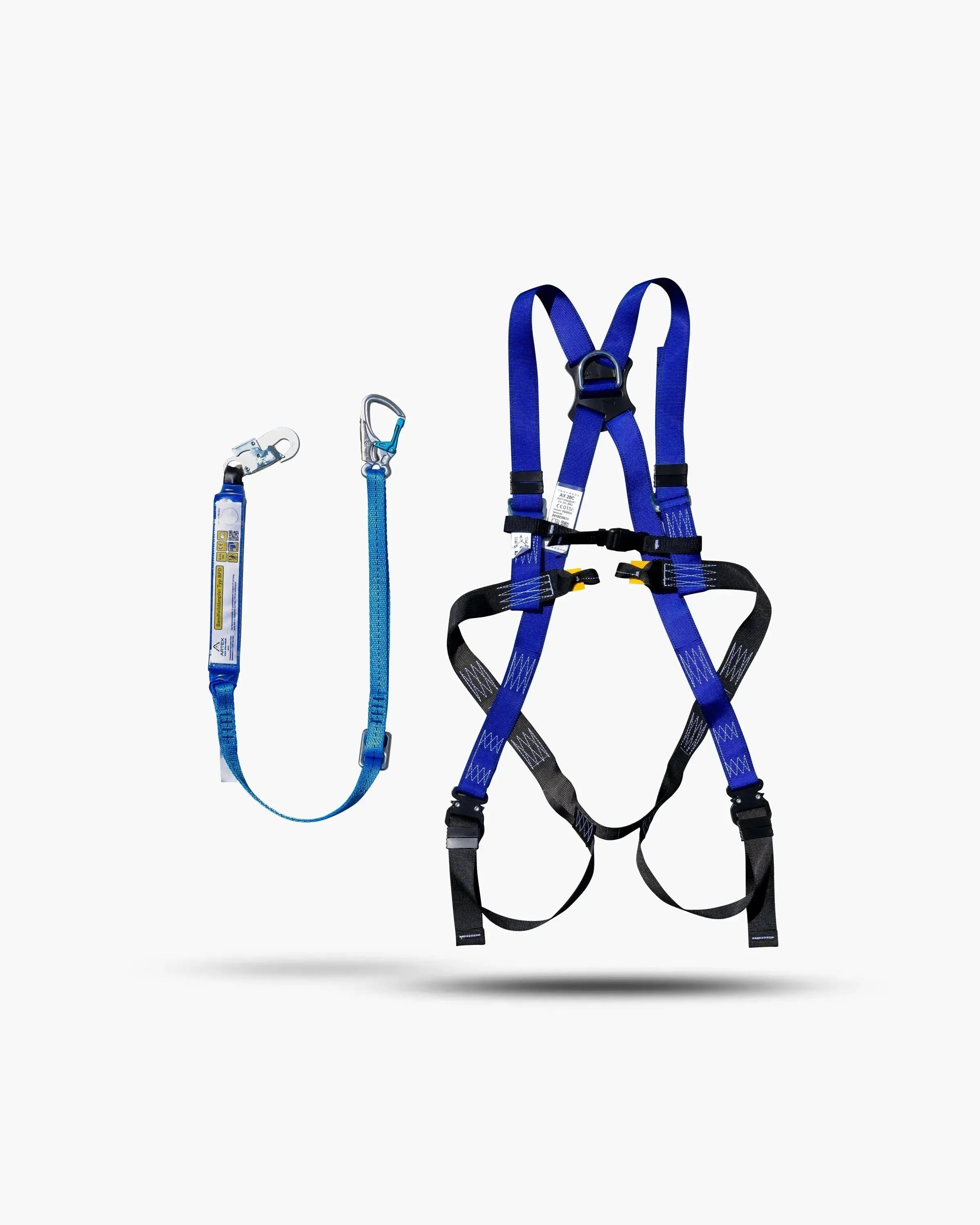


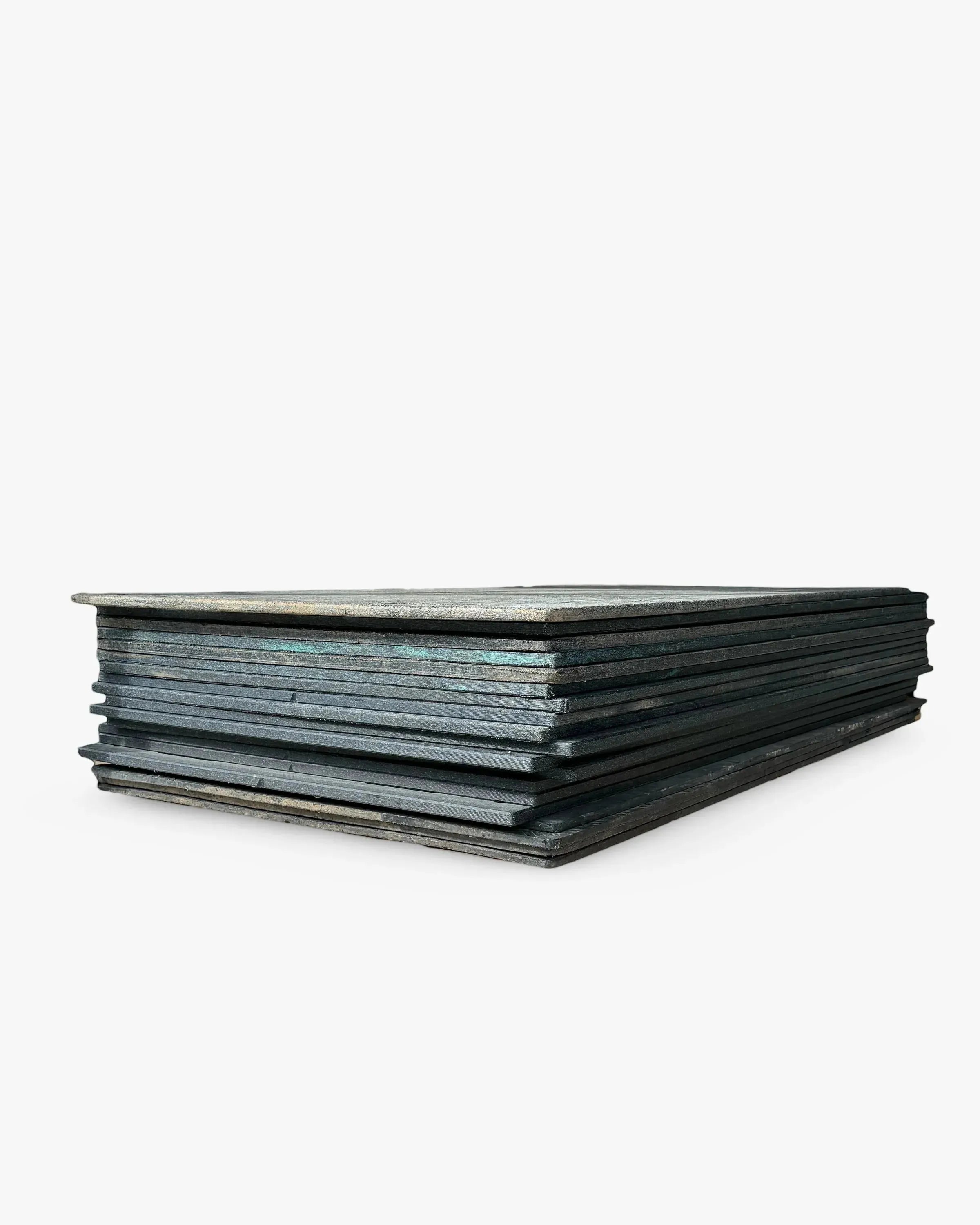

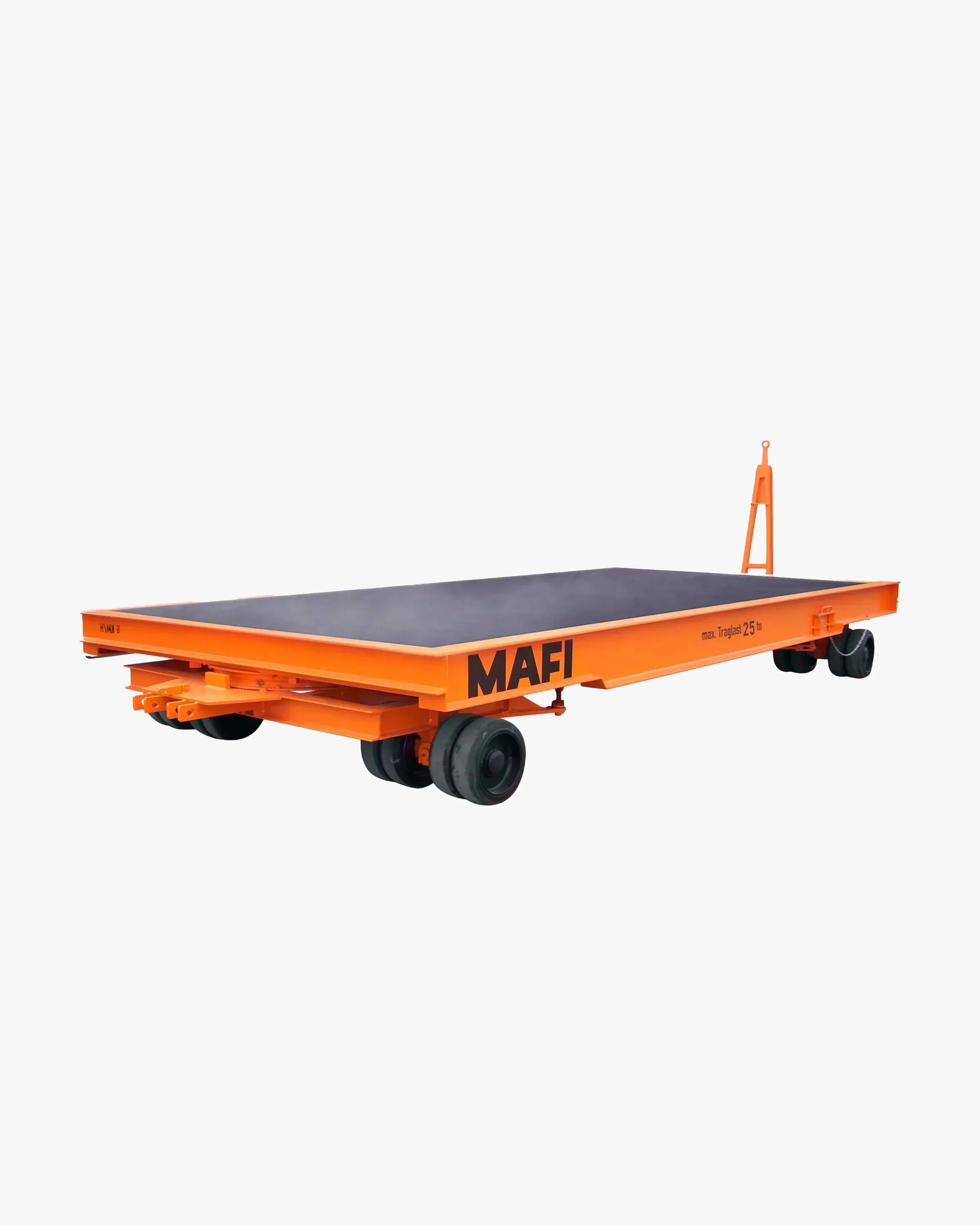
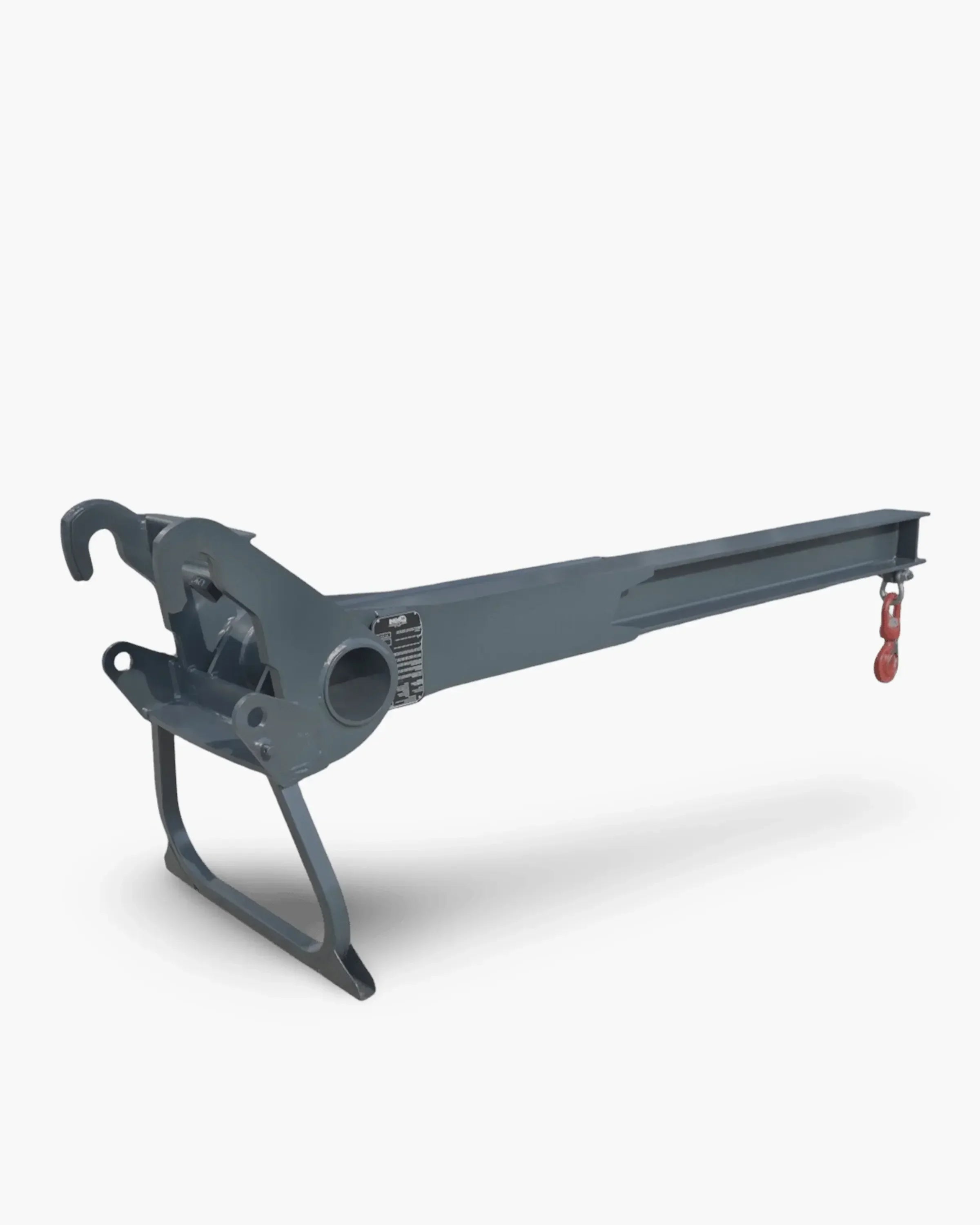
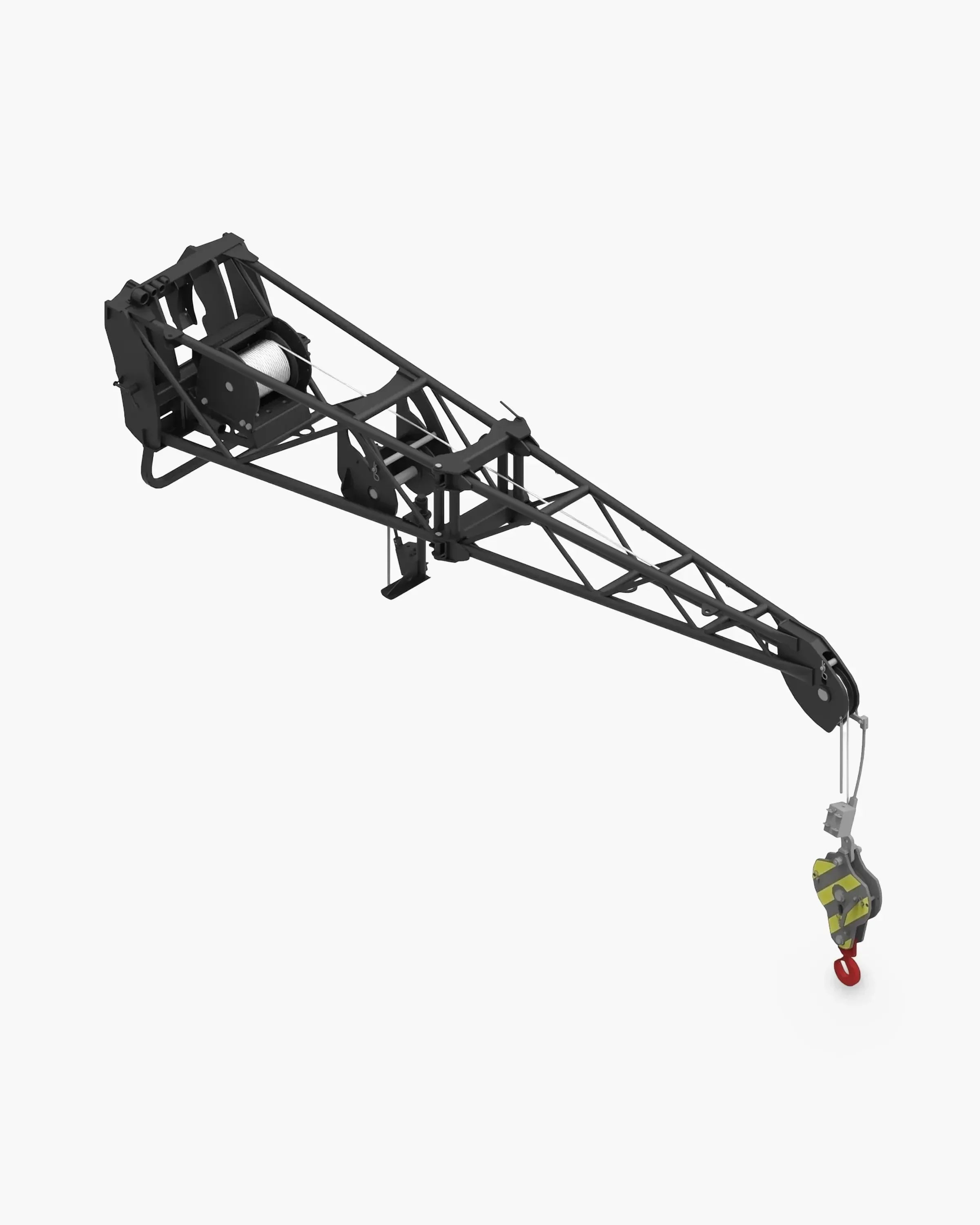
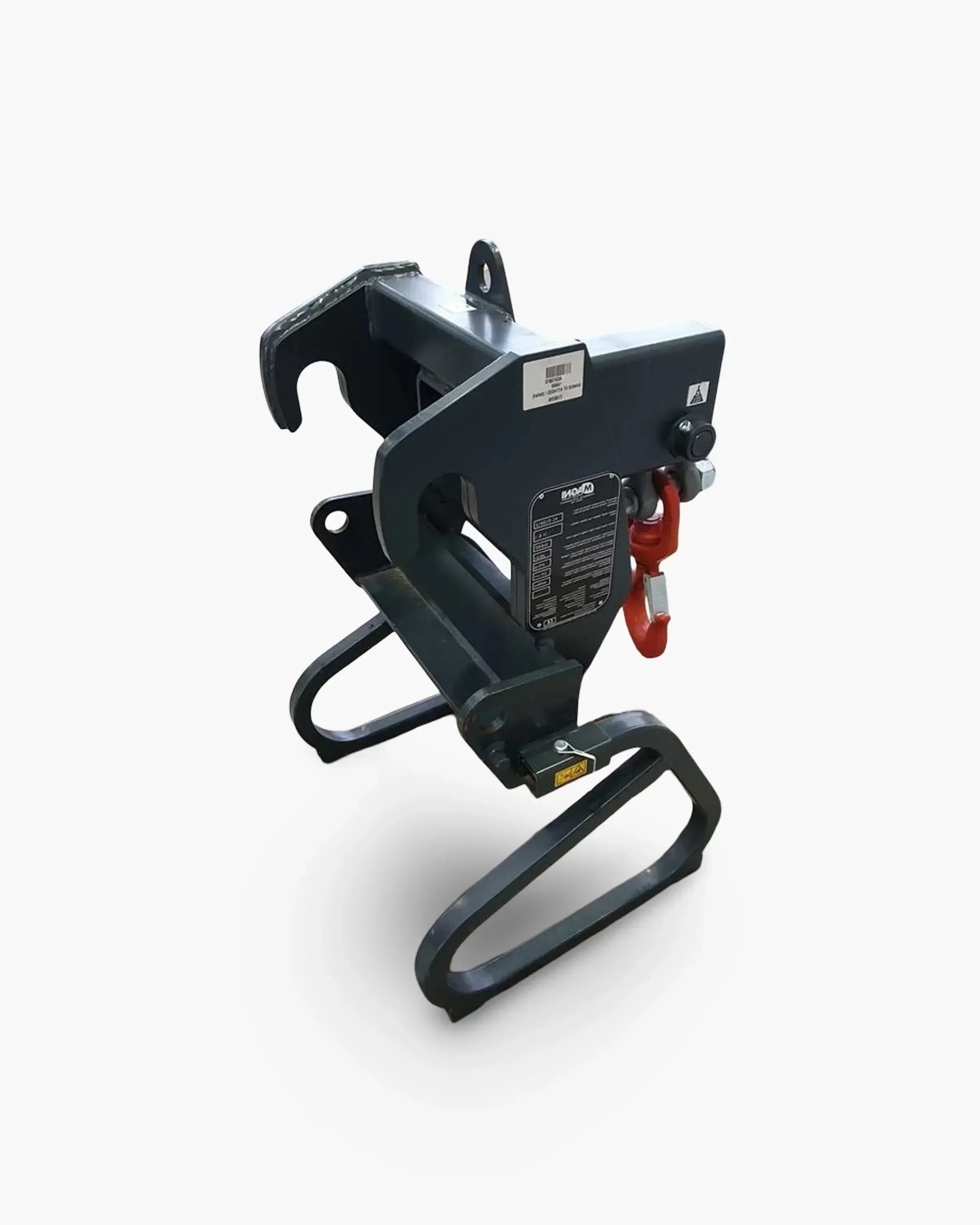

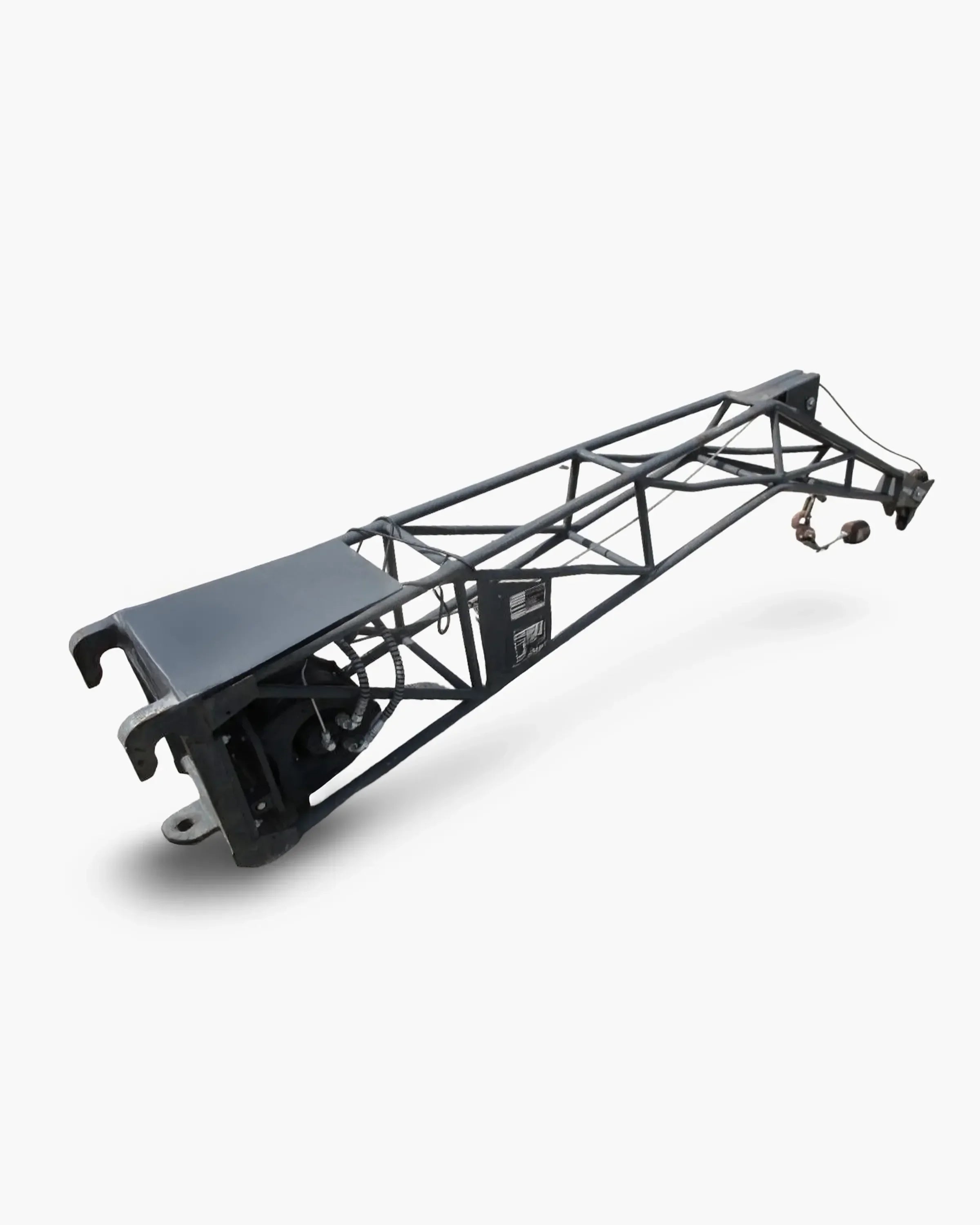
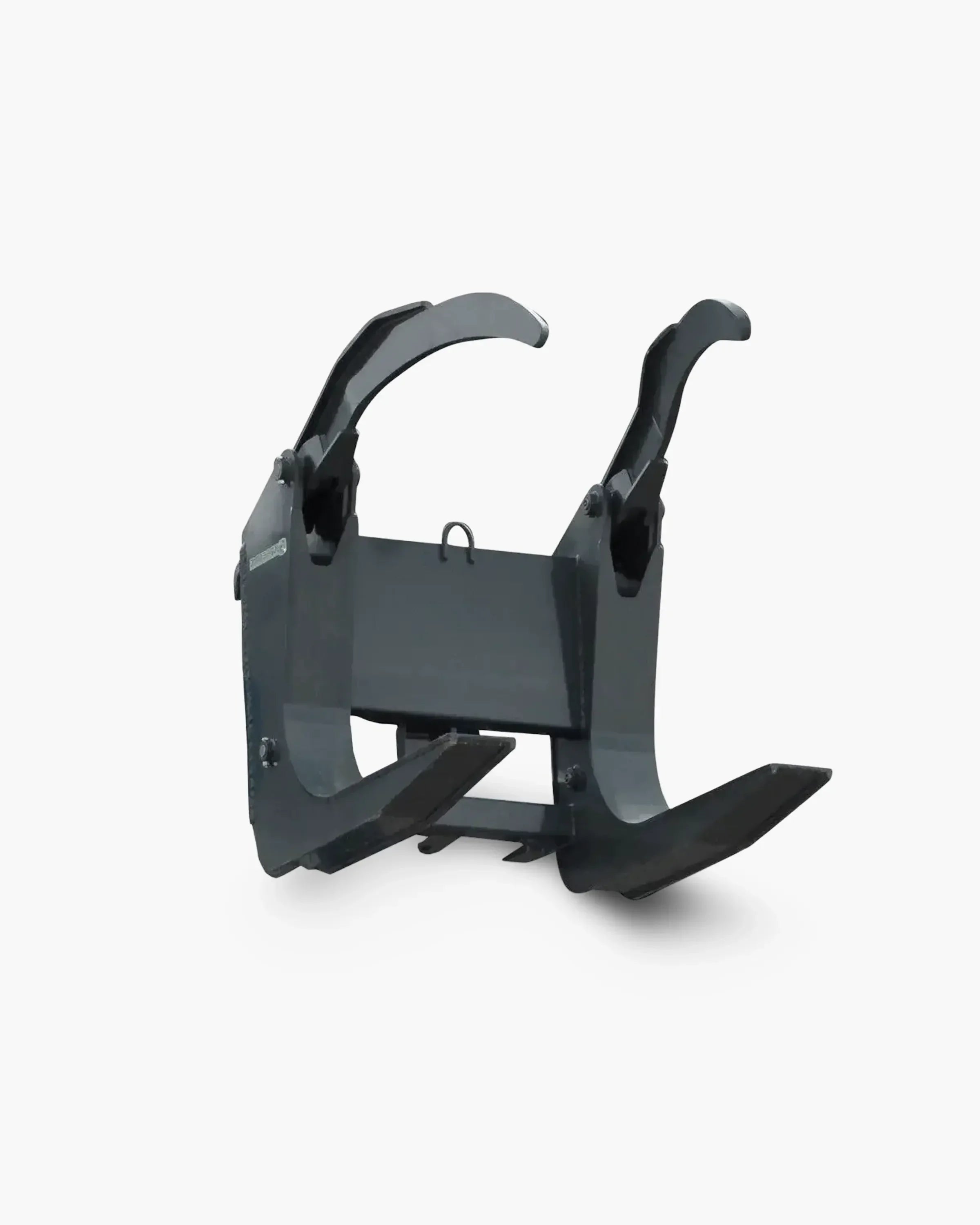
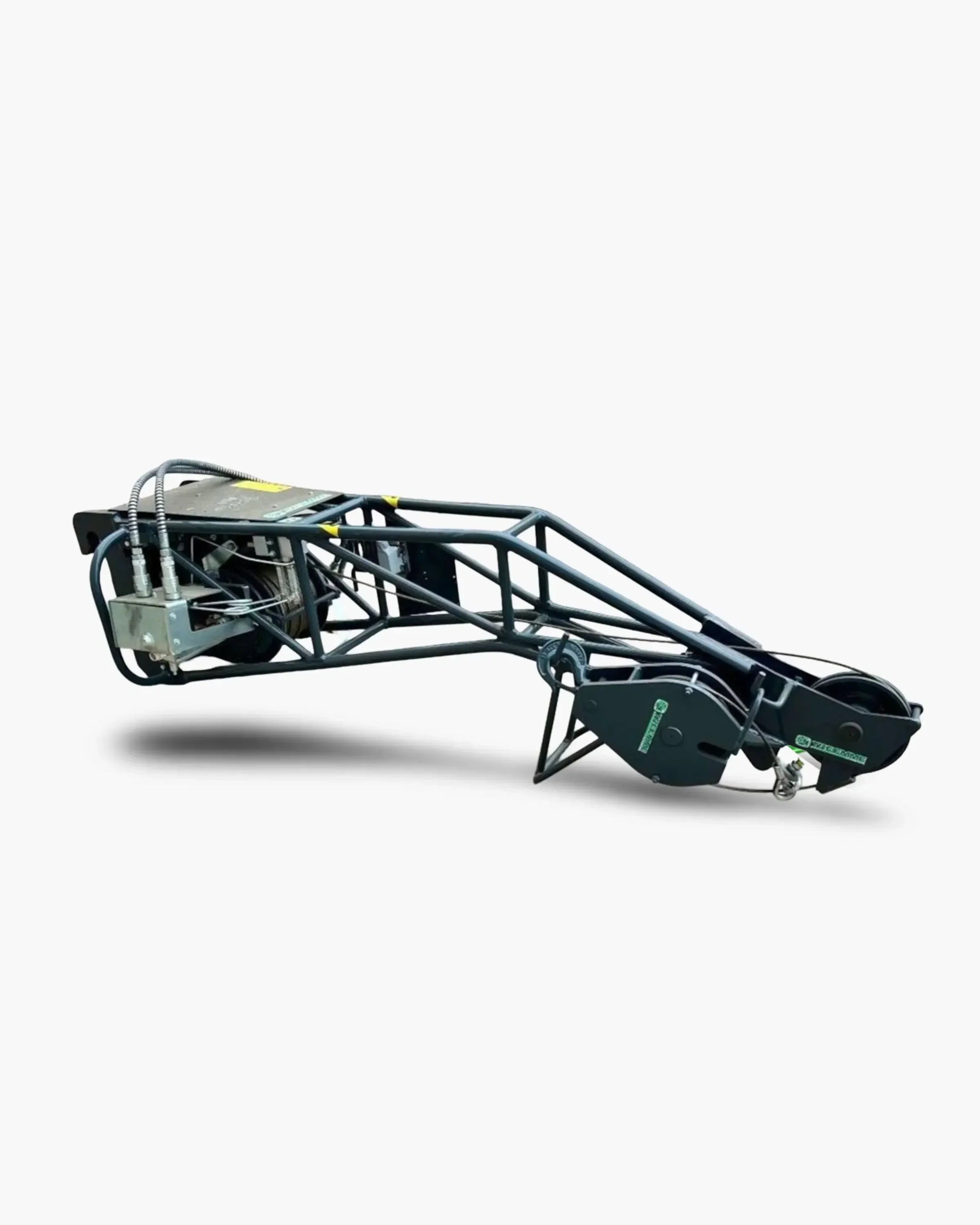

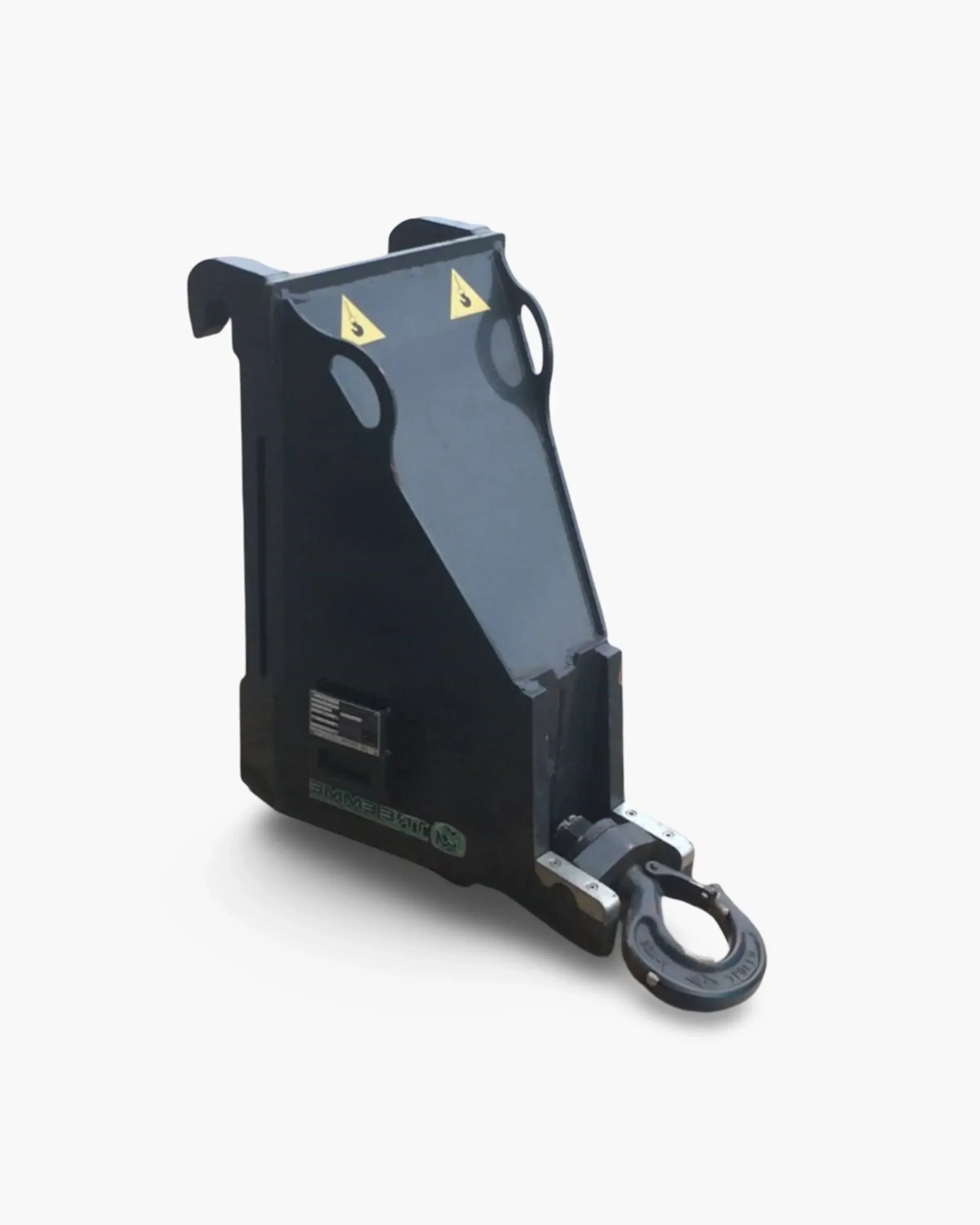
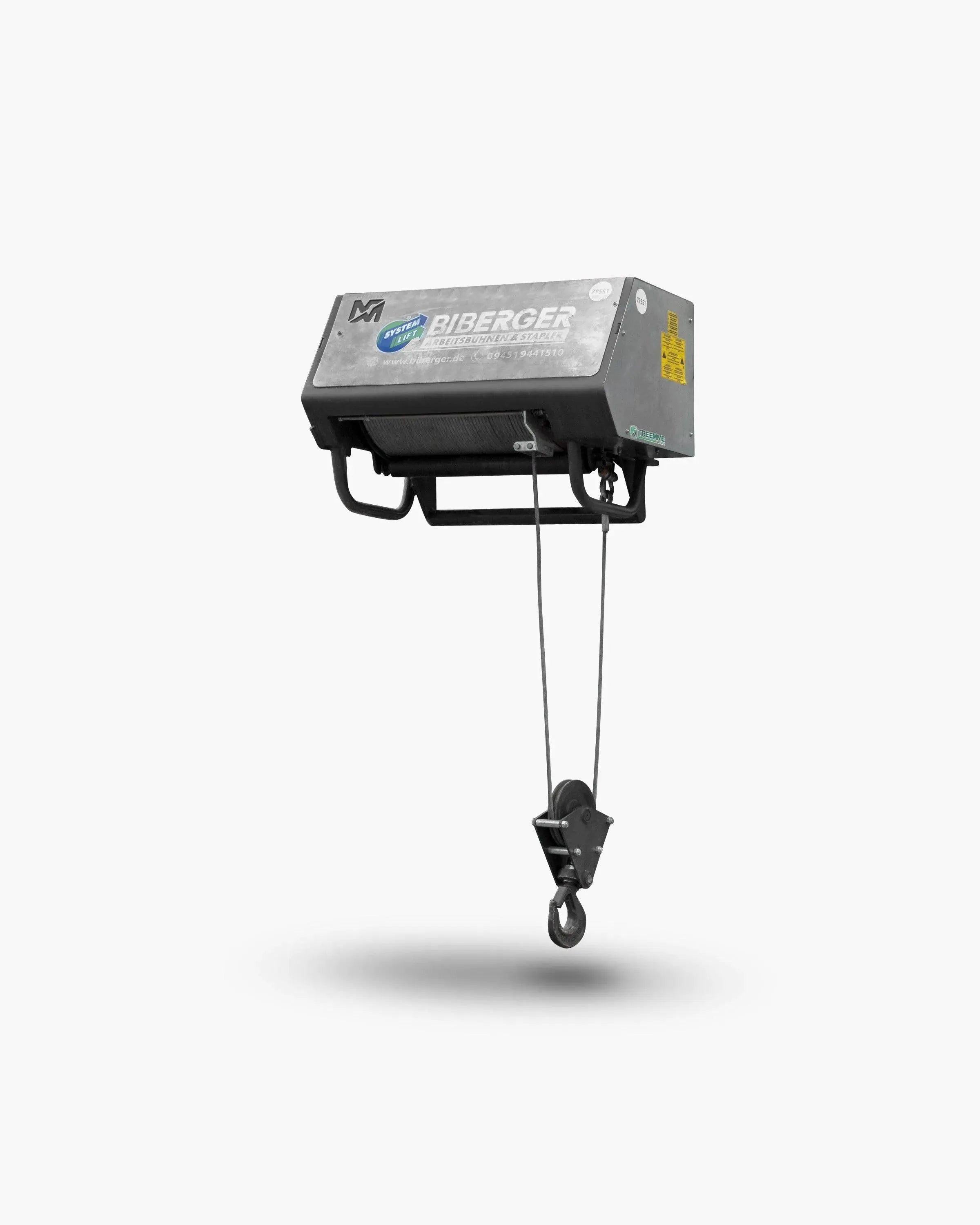
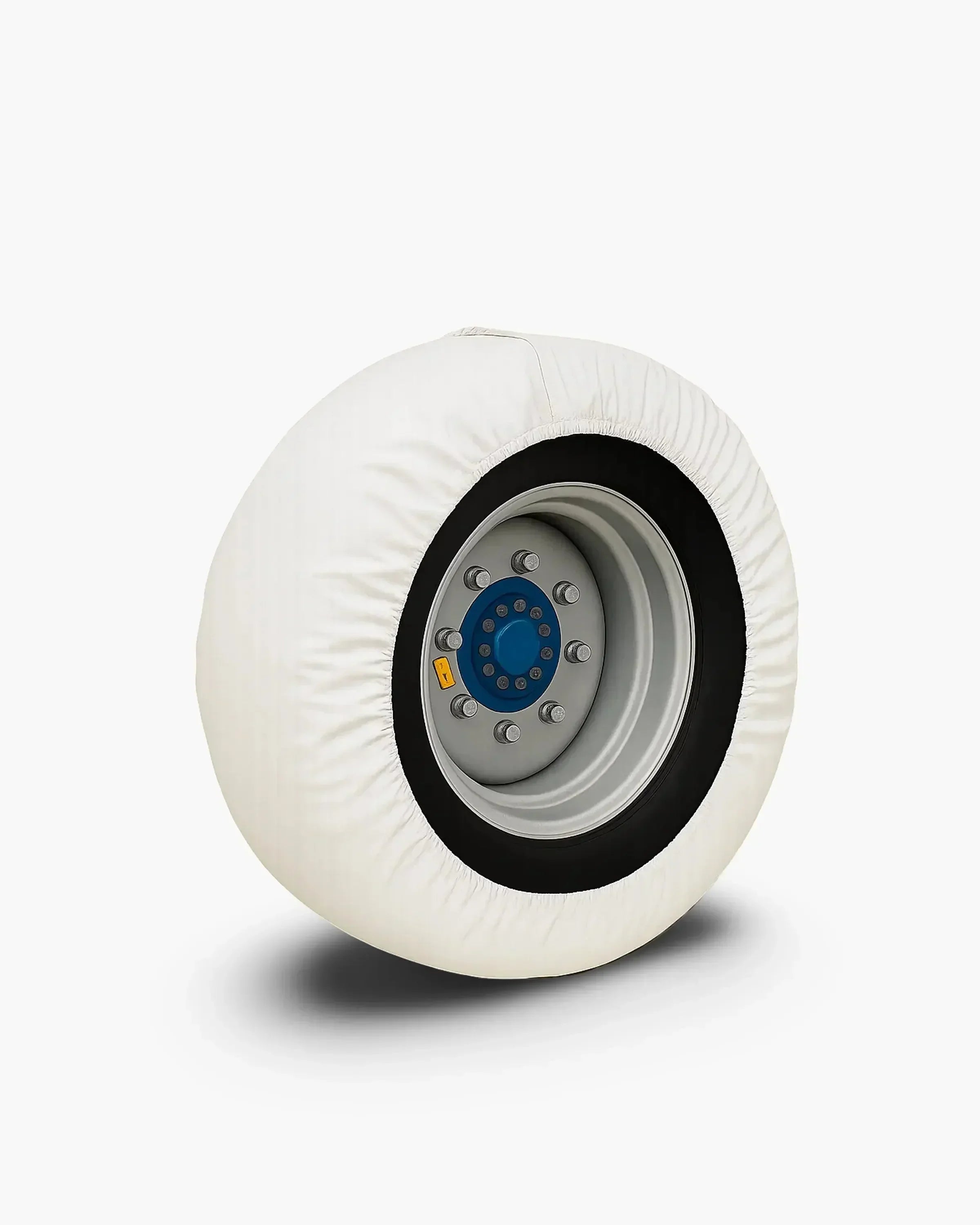


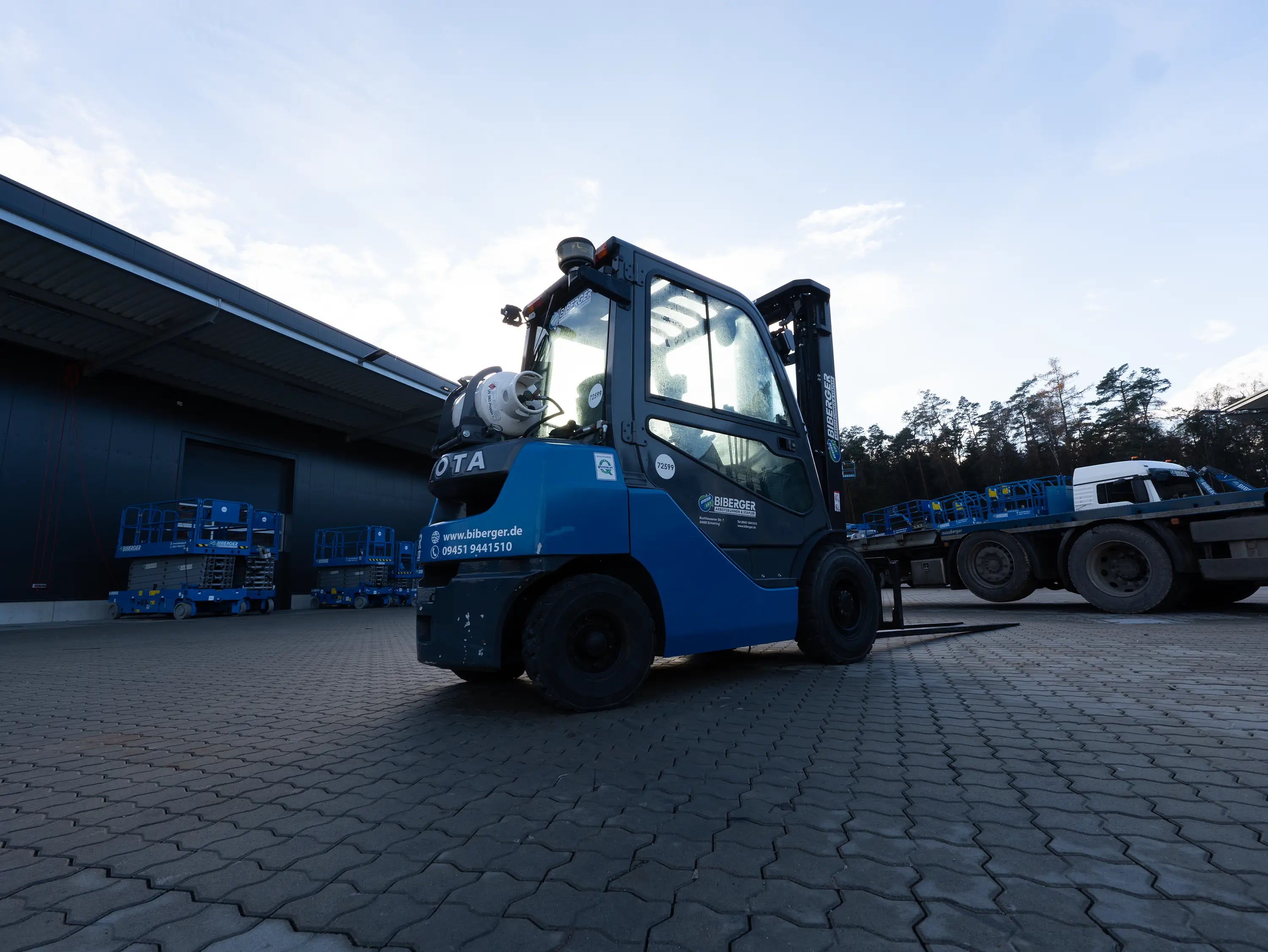

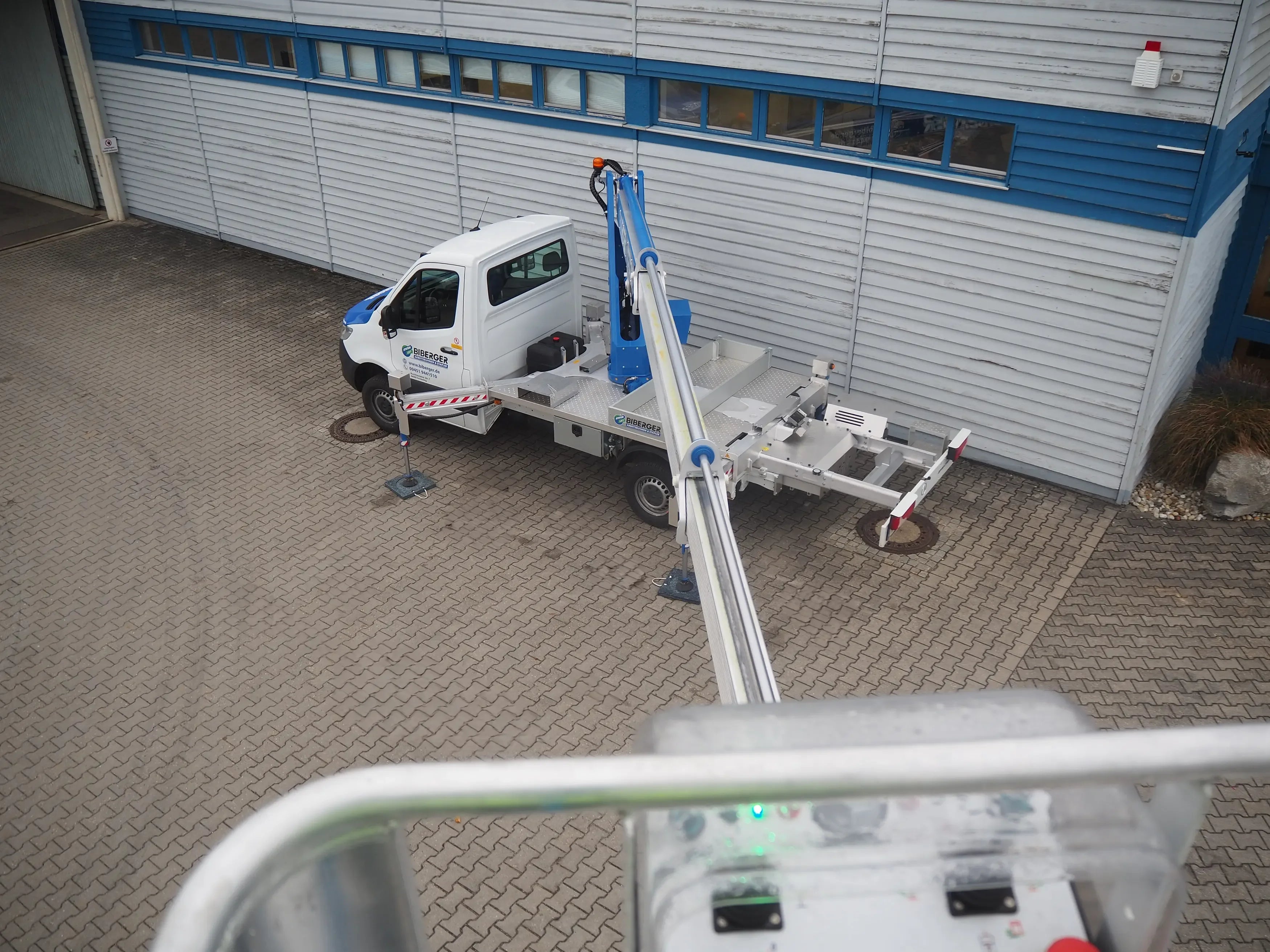
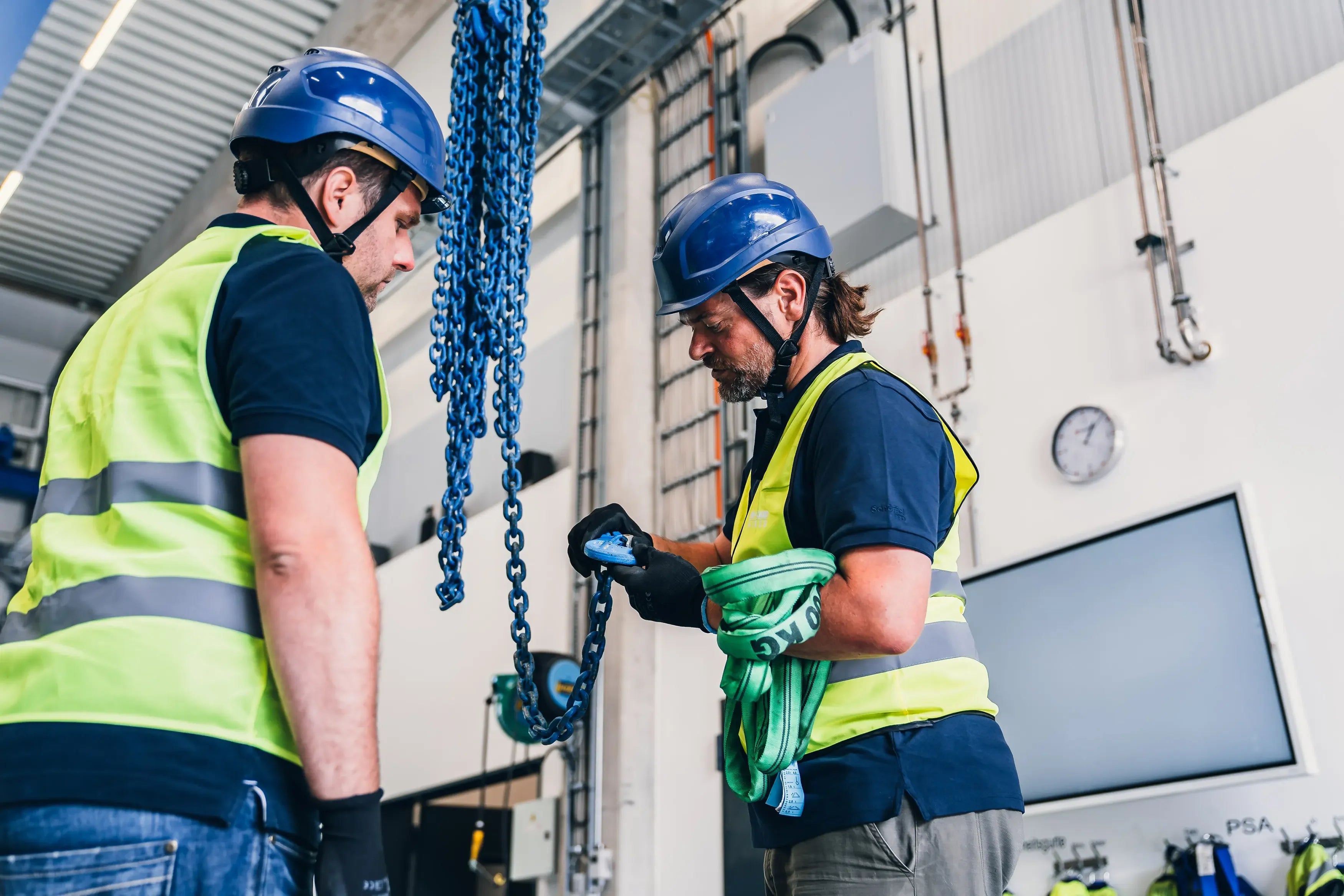
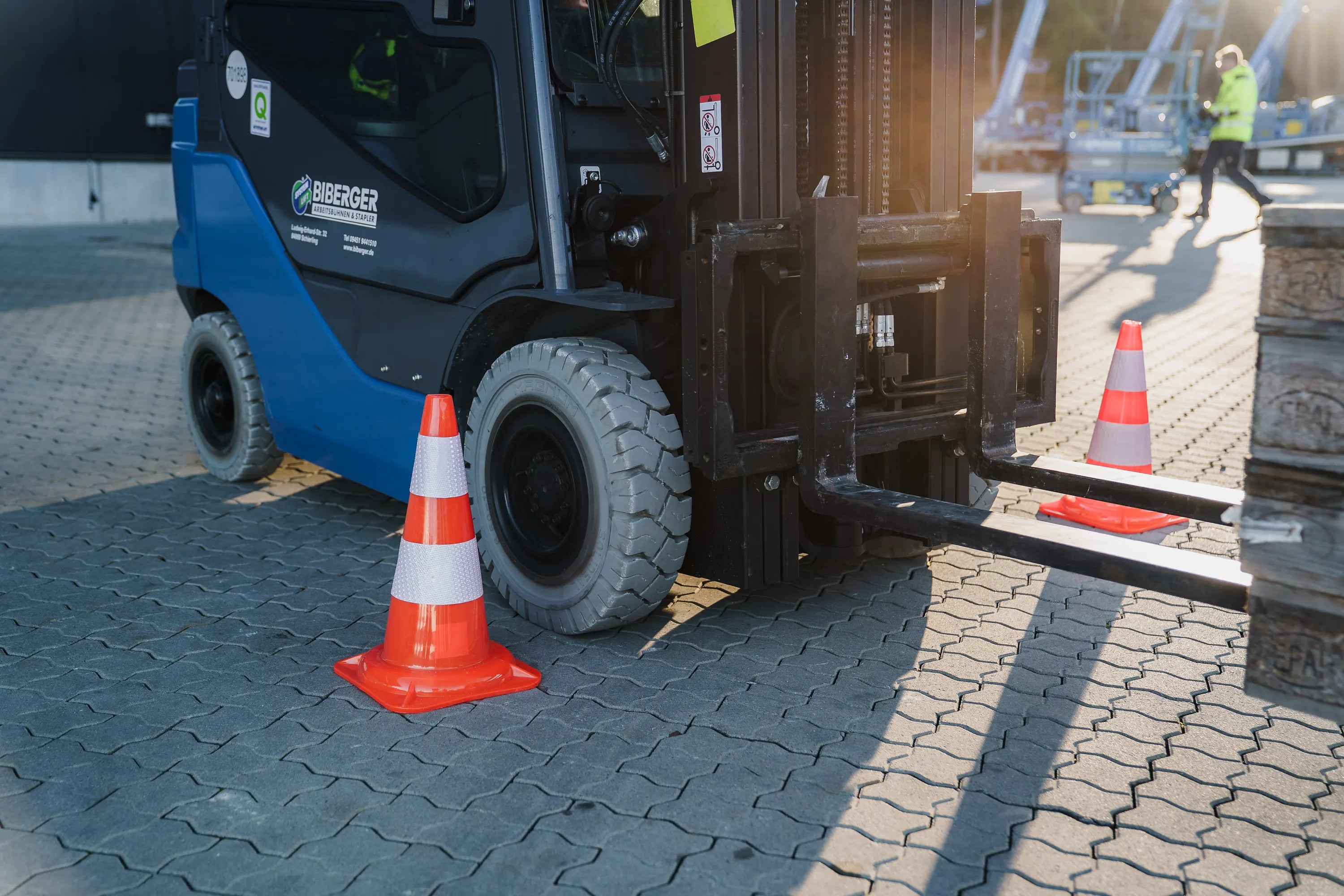
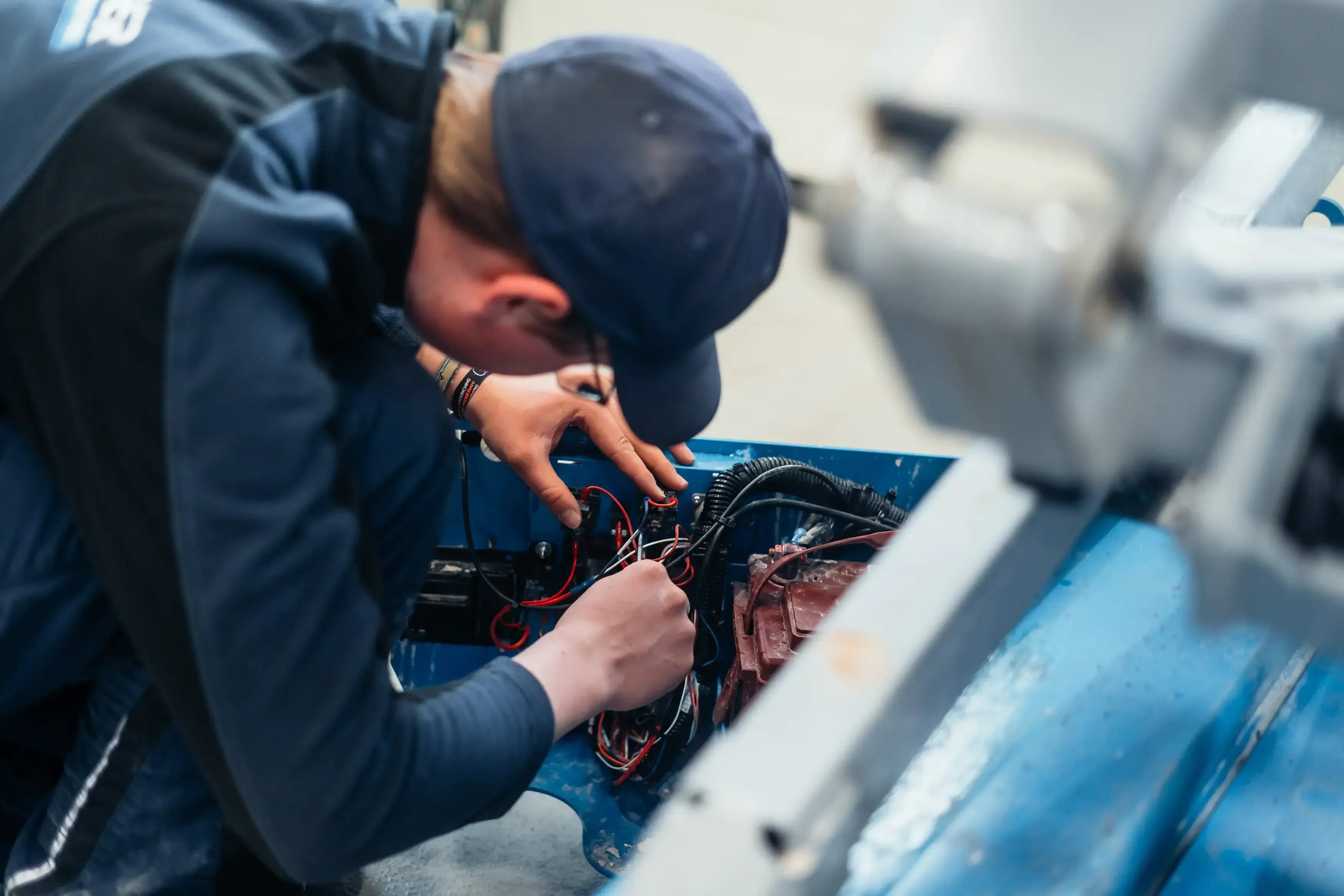
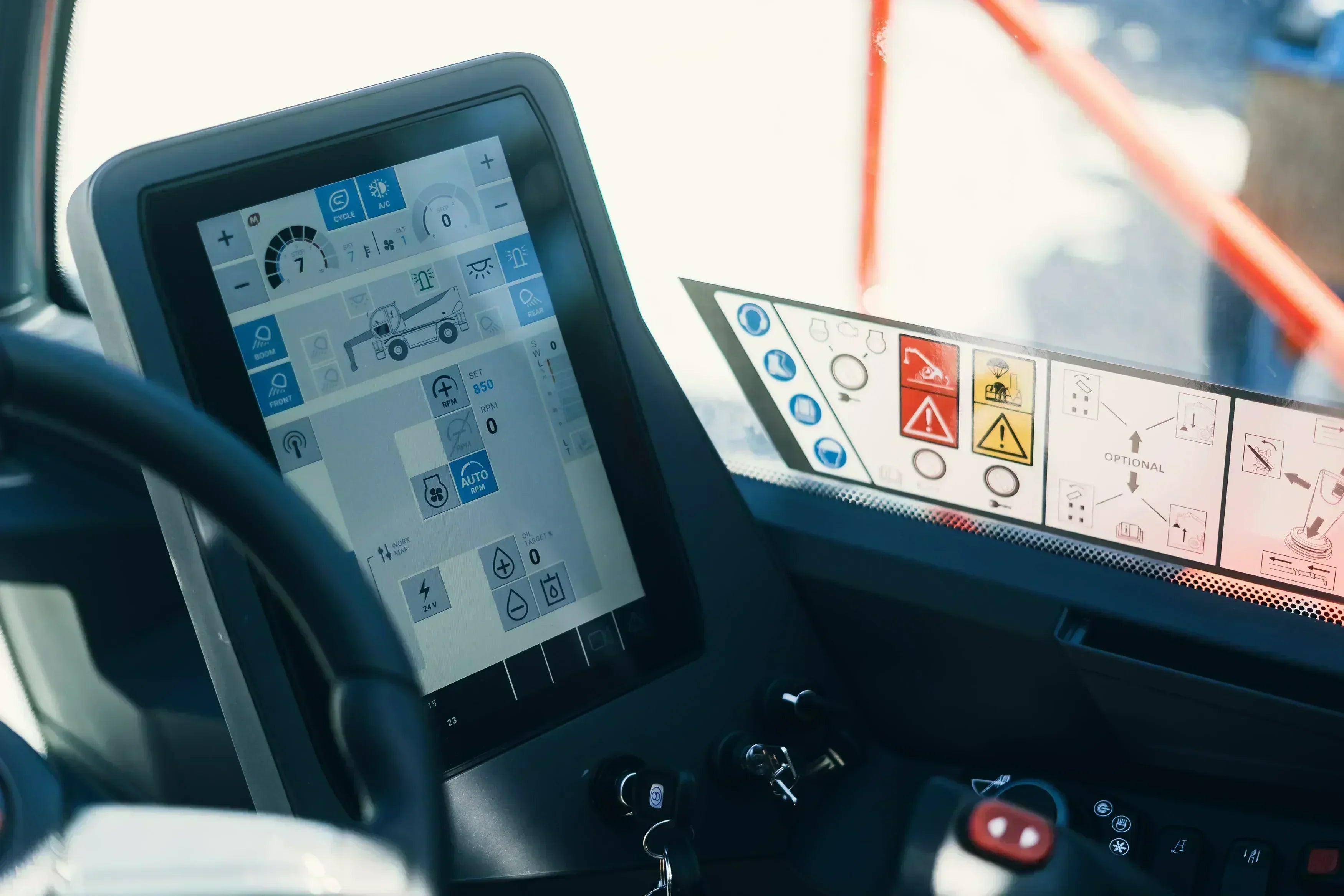
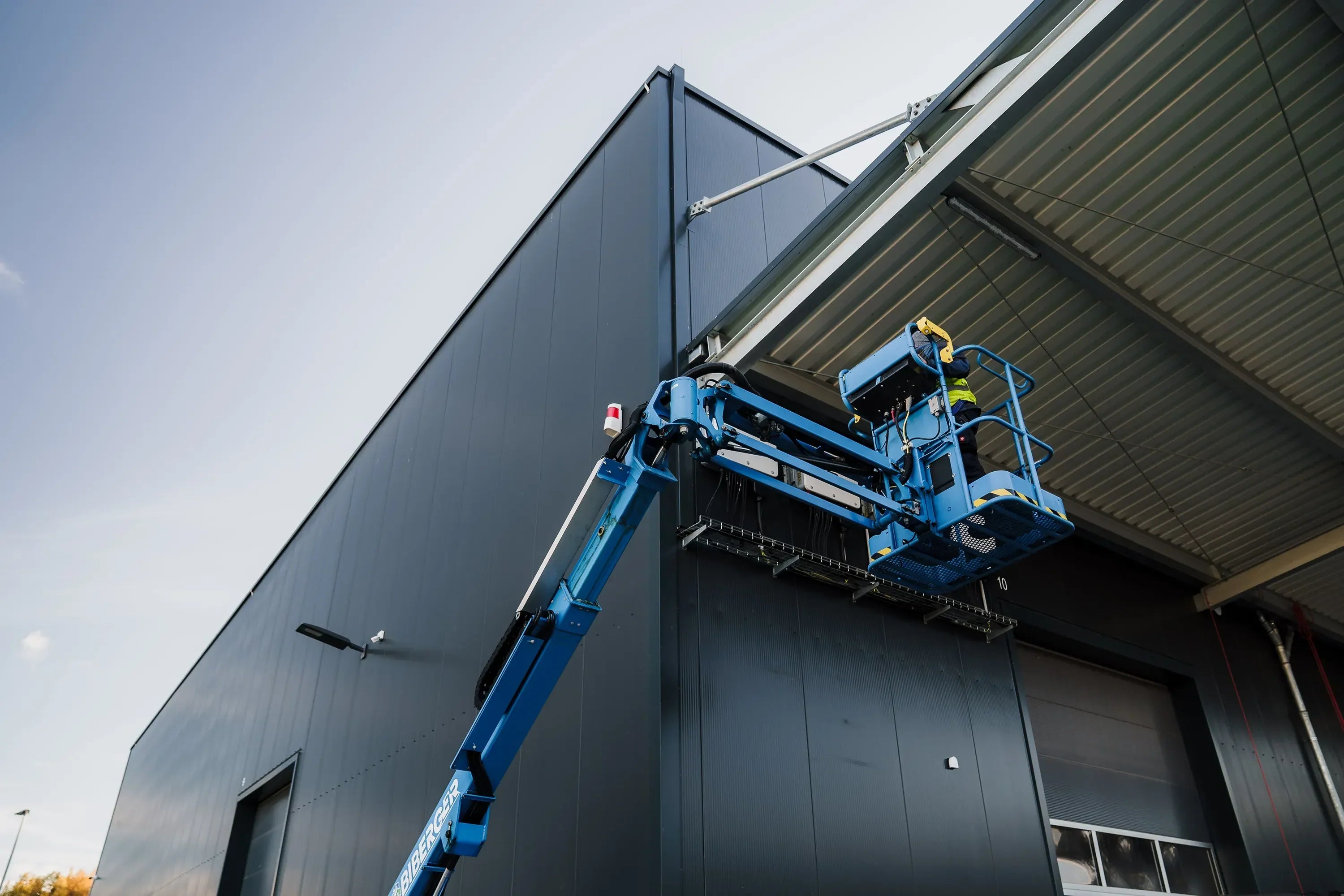
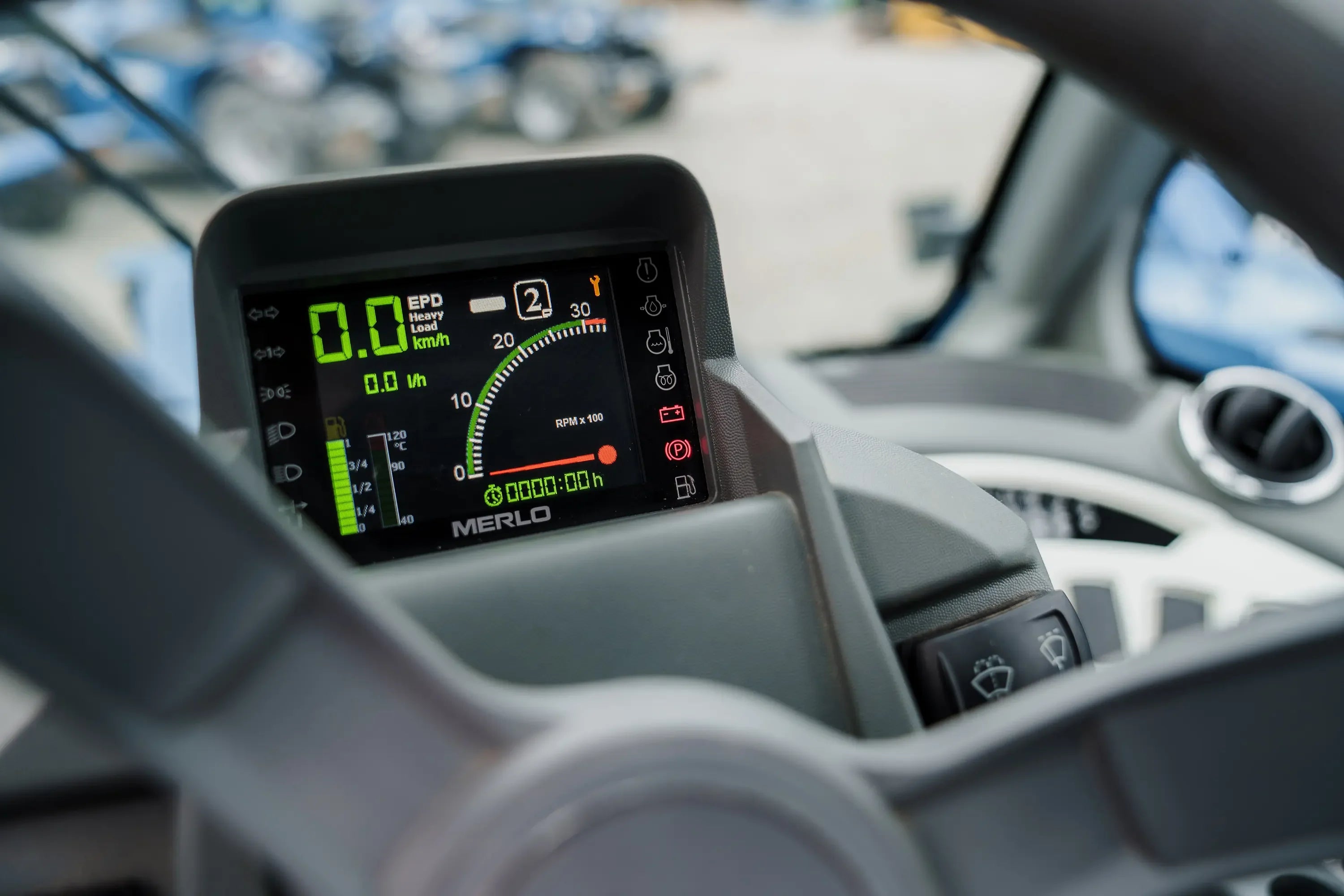
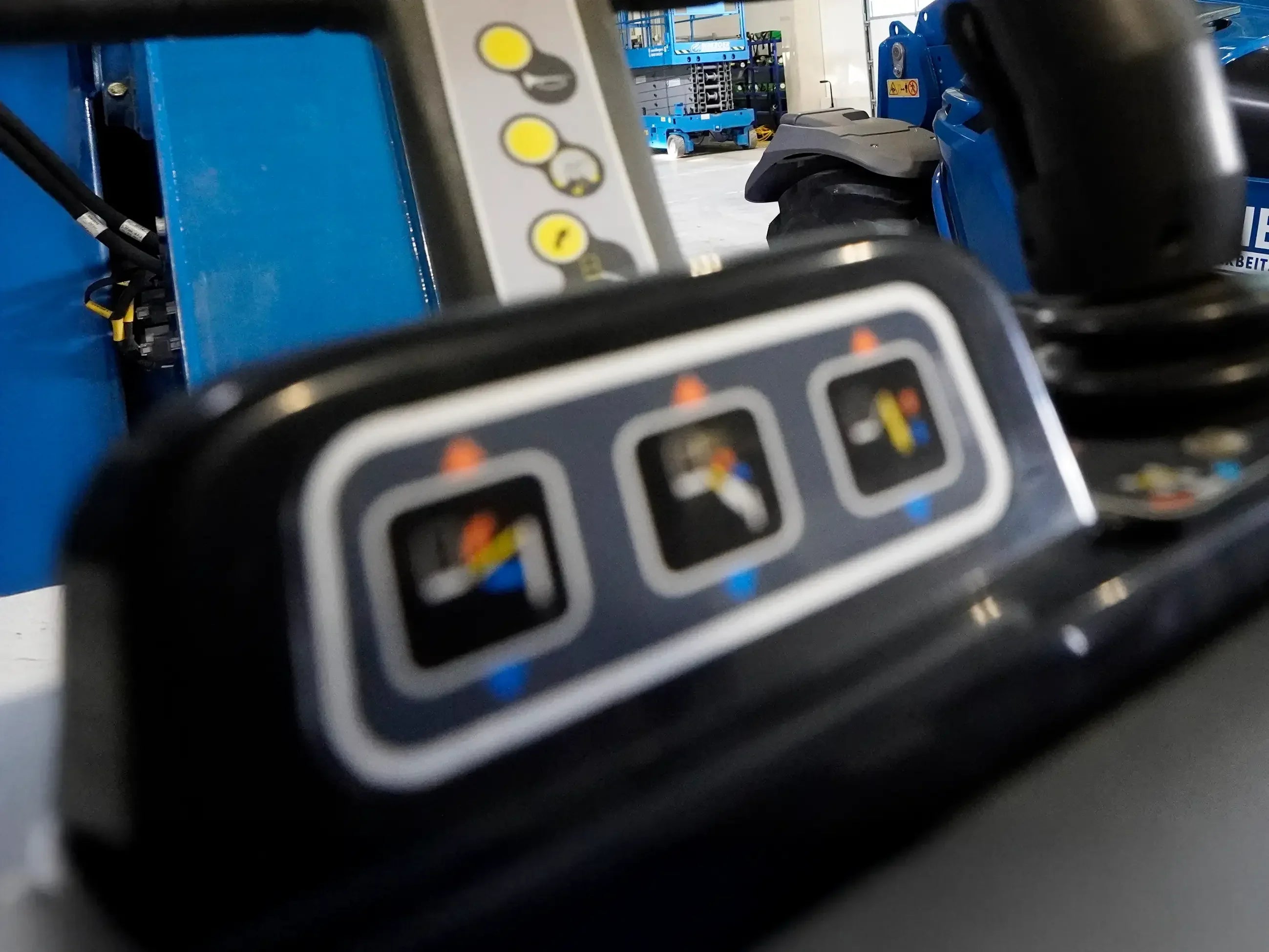






Share:
The agony of choice: Which work platforms for which tasks?
Video shoot for SYSTEM-CARD training courses: Telehandlers and Rotoforklifts
Our editorial quality standards
The subject content on biberger.de are editorially created, reviewed, and continuously updated. The basis is our daily work with aerial platforms, telehandlers, and industrial trucks – in rental, sales, operational planning, and technical support.
Each article draws on real-world experience and is editorially reviewed for clarity, accuracy, and practical relevance according to expert criteria. Technical statements are regularly compared against current industry standards and best practices.
The aim of our publications is to make reliable specialist knowledge accessible and to offer guidance to users, decision-makers and industry partners. BIBERGER sees itself as an independent information platform for safe, economical and modern height access technology – well-founded, comprehensible and free from advertising influence.